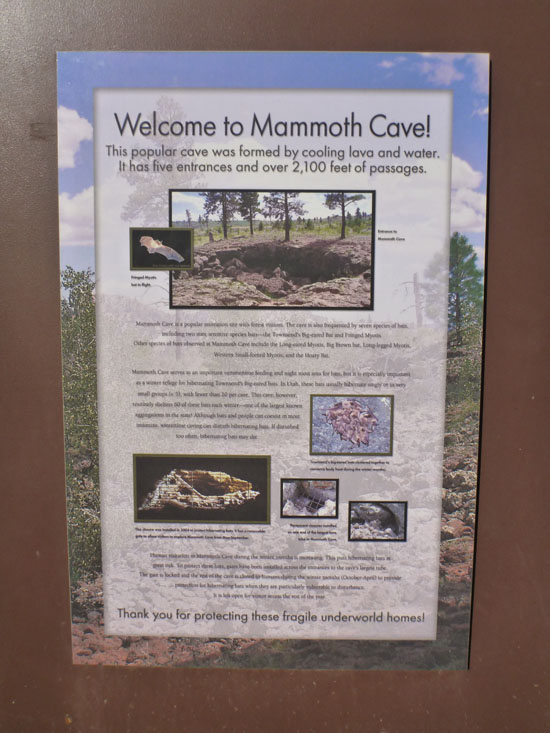
Information kiosk.
Welcome to Mammoth Cave! This popular cave was formed by cooling lava and water. It has five entrances and over 2,100 feet of passages. Mammoth Cave is a popular recreation site with forest visitors. The cave is also frequented by seven species of bats, including two state sensitive species of bats - the Townsend's Big-eared Bad and Fringed Myotis. Other species of bats observed at Mammoth Cave include the Long-eared Myotis, Big Brown bat, Long-legged Myotis, Western Small-footed Myotis, and the Hoary Bat. Mammoth Cave serves as an important summertime feeding and night roost area for bats, but it is especially important as a winter refuge for hibernating Townsend's Big-eared bats. In Utah, these bats usually hibernate singly or in very small groups (<5), with fewer than 20 per cave. This cave, however, routinely shelters 60 of these bats each winter - one of the largest known aggregations in the state! Although bats and people can coexist in most instances, wintertime caving can disturb hibernating bats. If disturbed too often, hibernating bats may die. Human visitation to Mammoth Cave during the winter months is increasing. This puts hibernating bats at great risk. To protect these bats, gates ahve been installed across the entrances to the cave's largest tube. The gate is locked and the rest of the cave is closed to humans during the winter months (October-April) to provide protection for hibernating bats when they are particularly vulnerable to disturbances. It is left oven for visitor access the rest of the year.